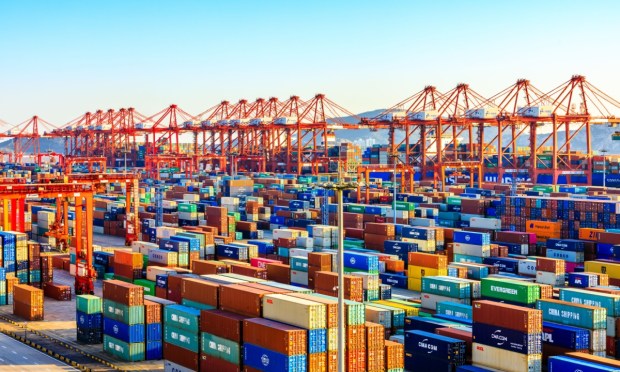
With every innovation, the world gets a little bit smaller and interconnected.
And with the news Monday (April 8) that Kyriba and Onyx, a J.P. Morgan business unit, are collaborating to better streamline cross-border payments, global expansion and payments innovation are top of mind for businesses of all shapes, sizes and nationalities.
According to the Bank of England, the value of cross-border payments is forecast to increase to over $250 trillion in just the next three years. But despite the size of the total addressable market, cross-border payments generally remain more expensive, opaque, and slower than domestic payments — something that holds true across both business-to-consumer (B2C) and business-to-business (B2B) payments.
That’s why the time has never been better for advances that can help make cross-border payments faster, cheaper, more accessible and more transparent — as well as help drive interoperability across the far-flung central banks, payment system operators, providers and participants that make up the global cross-border payments ecosystem.
Read more: Interoperability and Transparency Are Key Challenges as Cross-Border Payments Modernize
As noted here in January, cross-border payments have rebounded alongside global trade, providing growth opportunities for firms of all sizes. But as businesses look to enter foreign markets, they quickly realize that traditional cross-border payment methods, such as wire transfers, are full of delays and complexities, with many issues that may at first seem relatively minor ending up causing significant friction.
Faulty cross-border payments cost U.S. merchants at least $3.8 billion in sales last year alone, according to data in the PYMNTS Intelligence report, “Cross-Border Sales and the Challenge of Failed Payments,” which also found that 70% of U.S. firms experienced higher rates of failed payments in cross-border sales compared to domestic sales.
But beneath the challenge of improving cross-border payments sits an evergreen opportunity to drive global commerce forward, and it is one that many payment players are working toward, with a variety of different approaches.
On Monday, Singapore-based Tranglo announced it had expanded its cross-border payment network. On Tuesday (April 9), cross-border payment platform dLocal launched a new partnership with payroll and payments platform Papaya Global to help drive global workforce payments.
The two launches followed the announcement April 4 that cross-border money transfer service Xoom now lets users make transactions with PayPal’s USD stablecoin.
Read also: Currency Matching Key to Effectively Competing in International B2B Markets
Traditional cross-border payment systems are often slow, involving multiple intermediaries and manual processes, which can take several days to complete transactions. Innovation can streamline these processes, reducing the time it takes for funds to transfer from one country to another.
For B2B businesses, the lack of visibility into international transactions can hamstring working capital strategies and keep businesses in the dark about critical operating information.
James Butland, U.K. managing director at Mangopay, told PYMNTS in an interview posted Jan. 23 that there is a growing movement toward faster payments and interoperability which is expected to revolutionize B2B and cross-border transactions.
“The cross-border B2B market is growing massively,” Neil Drennan, chief technology officer at Visa Cross-Border Solutions told PYMNTS in a separate interview posted in November. He emphasized that this rapid growth means there are more businesses than ever looking to move money around the world “quickly and transparently, with complete clarity around costs.”
As covered here, global businesses frequently transact within multicountry and multicurrency environments, making it critical that their finance departments continually test solutions to optimize their cross-currency workflows without disrupting their existing operations.
After all, many cross-border payments are also cross-currency payments, creating illiquid currency pairs that continue to face limitations, such as high costs, slow settlement times, lack of access to market solutions, and limited transparency.
Facilitating cross-border transactions that don’t get hung up in foreign exchange (FX) settlement or correspondent banking processes, and can settle seamlessly, securely and instantly, in many ways represents the holy grail of cross-border payments innovation.
And while the marketplace is not there just yet, further reading in “The Treasury Management Playbook: Spotlight on Cross-Border Payments,” a PYMNTS Intelligence and Citi collaboration, examines why cross-border payments are more important than ever and how companies can minimize frictions associated with international transactions.